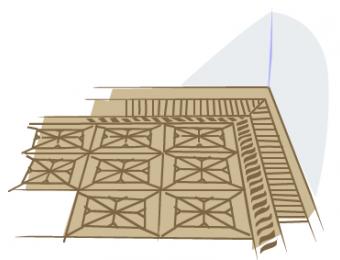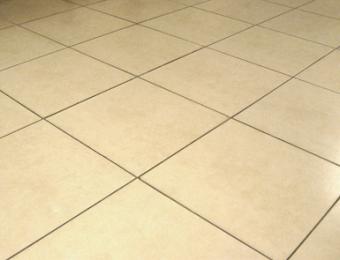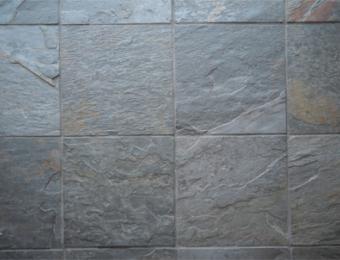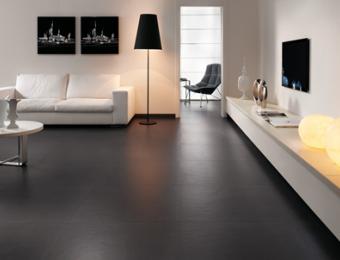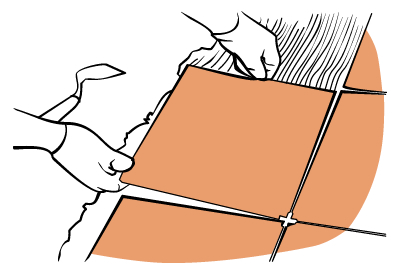
Ceramic floor tiles are a very common flooring option in wet areas like bathrooms and kitchens. Tiles come in hundreds of texture, colour and size combinations, are durable, water resistant and easy to keep clean. They keep their colour even after years of use, and can be cleaned frequently without fear of bleaching or staining. They can be laid in patterns to accommodate any tastes, and can be cut to purpose too allowing for even more flexibility in design.
Tiles don’t offer much in the way of thermal and acoustic insulation though. Because they are a hardened, dense surface, heat doesn’t penetrate far and sound bounces off them, carrying around the room. Fragile objects such as glass will usually shatter on impact with a tile floor.
What should I look for when choosing tiles?
An important consideration when choosing floor tiles is slip resistance. Textured surfaces work best in wet areas and play a major part in preventing falls. Floor tiles should be chosen as much for durability as they are for aesthetics; other tiling in your home won’t see nearly as much traffic as those on the floor will. Wall and floor tiles may look similar, but floor tiles are thicker and have a less porous backing.
Tiles are graded on a scale of one to five for visible surface abrasion resistance (i.e. scratching) and the tiles most suitable for residential purposes have a rating of three. Lower ratings are suited to walls and surfaces, higher ratings are used in commercial applications.
How are floor tiles installed?
The subfloor is cleaned off and swept free of any debris. Mortar is spread in small sections with a floor trowel, and the first tiles are laid in the centre of the room, working outwards. This ensures that the pattern flows from the middle and that any tiles that need to be cut will be up against the walls and less noticeable. Once the tiles have been laid and allowed to set for 24 hours, the grouting can be applied. This needs to be done carefully, ensuring there are no air bubbles or gaps between the tiles.
Suitability and maintenance
Tiles are an ideal choice in wet areas like the bathroom and kitchen because of their water and stain resistance. They are easily mopped and swept, and should be laid and grouted so that they are more or less crevice free, so they won’t catch dust. If a tile is broken, replacing it is relatively easy provided that you have a spare.
Tiles are less suited to main living areas like lounge and bed rooms in most parts of Australia, as the hard surfaces don’t retain warmth very well and bounce sound around. Having said that though, they are often used in these areas in warmer parts of Australia where carpet is less popular. Slips on tiled areas are more dangerous too, which is something that those with small children may need to consider.
|
Advantages
|
Disadvantages
|
